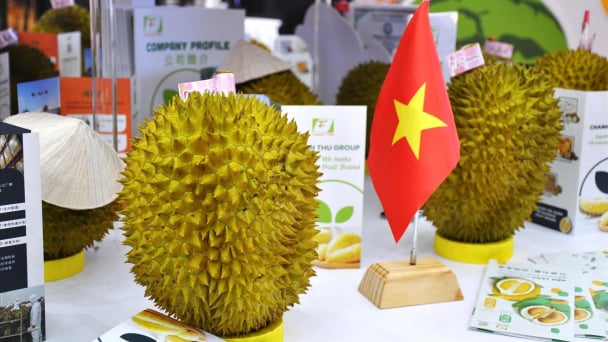May 30, 2025 | 05:17 GMT +7
May 30, 2025 | 05:17 GMT +7
Hotline: 0913.378.918
May 30, 2025 | 05:17 GMT +7
Hotline: 0913.378.918

Vietnamese export wood products. Photo: Son Trang.
As per the U.S. International Trade Commission, the importation of wood furniture into the United States during the first eight months of 2024 amounted to USD13.8 billion, a 5.6% increase from the same period in 2023. Vietnamese wood furniture imports to the United States were USD5.6 billion in the first eight months, accounting for 40.6% of the total U.S. import value in this sector. Vietnam continues to be the largest supplier of wood furniture to the United States.
Consequently, the market proportion of Vietnamese wood furniture in U.S. imports of this product category is on the rise. The total import value in the United States was 36.2% in 2023, which increased to 40.2% in the first half of the year and reached 40.6% by the end of August. Vietnamese wood furniture made up 36.2% of this percentage.
The expanding interest of American consumers in products from Vietnam is indicative of the increase in value and market share of Vietnamese wood furniture in U.S. imports.
As the U.S. housing market progressively recovers, it is anticipated that U.S. wood furniture imports will continue to increase. The 30-year mortgage interest rate has decreased to 6.1%. As the Federal Reserve commences to reduce interest rates, it is probable that home loan rates will continue to decrease, which will stimulate home sales and, as a result, stimulate the demand for wood furniture.
The Institute for Supply Management (ISM) has reported that U.S. inventory levels are declining at the quickest rate in 2024, indicating that manufacturers are maintaining low inventory levels. The positive growth trajectory of Vietnam's timber and wood product exports to the United States is anticipated to be bolstered by this favorable supply-demand factor in the final months of 2024.

Vietnam is one of the three greatest net exporters to the United States, and the United States maintains an annual trade deficit of approximately USD1 trillion, according to Mr. Do Ngoc Hung, the Head of the Vietnamese Trade Office in the United States. Photo: Son Trang.
However, the United States also imposes the most trade defense measures on Vietnamese exports, as per the Department of Import and Export (Ministry of Industry and Trade). Furthermore, it conducts inquiries into trade defense concerns among WTO member countries in a variety of markets. The intensity of domestic competition for U.S. industries is on the rise as a result of the increased imports.
In this context, it is probable that U.S. companies will intensify their utilization of these instruments in order to mitigate competitive pressure and restrict imports. Consequently, the wood industry must exercise caution and establish close relationships with the Vietnamese Trade Office abroad and the Trade Remedies Authority (Ministry of Industry and Trade) in order to receive early warnings of trade defense investigations. This allows for the implementation of proactive strategies to maintain market share in critical markets.
Vietnam is one of the three greatest net exporters to the United States, and the United States maintains an annual trade deficit of approximately USD1 trillion, according to Mr. Do Ngoc Hung, the Head of the Vietnamese Trade Office in the United States. Consequently, Vietnam is perpetually "on the radar" of U.S. trade defense activities.
There is a trend of an increase in trade defense activities, particularly as the United States enhances its trade defense weapons with new regulations and requirements related to labor, environment, and green development. In these instances, U.S. authorities frequently prioritize the protection of domestic companies.
As a result, Mr. Hung recommends that exporters to the United States remain prepared to address prospective litigation filed in the United States against their exported products. This entails striving to achieve the most favorable outcome possible by maintaining close collaboration with the Ministry of Industry and Trade and the Vietnamese Trade Office in the U.S. to provide the investigating authorities with comprehensive and expeditious information.
Vietnam's wood and forestry sector aims to export USD 15.2 billion worth of its products this year, an increase from USD 14.47 billion last year.
Since the slowdown in 2023, from the beginning of this year, wood and forestry processing associations and enterprises have been proactive in production and seeking export markets.
A series of market exploration fairs were held, attracting customers’ interest in Vietnamese wood products in key production areas, including Ho Chi Minh City, and Binh Dinh and Binh Duong provinces.
Translated by Linh Linh

(VAN) Reciprocal tariffs are exerting pressure on U.S. exports, prompting Vietnamese firms to shift their focus to Muslim markets, Thailand, and Brazil.

(VAN) A free booth for two years at Xinfadi, Beijing's largest wholesale market, will be allocated to Vietnam's agricultural products.

(VAN) Vietnamese shrimp exporters are actively looking for alternative markets and accelerating shipments to the United States in response to the pressure of impending reciprocal tariffs. This is occurring during a temporary tariff suspension.

(VAN) The import-export turnover between Vietnam and Singapore rose amid a trade rebound, with machinery, electrical equipment, and fuels making up the majority of the transaction value.

(VAN) Director General of the General Administration of Customs of China, Ms. Sun Mai Jun, has pledged to implement measures that will ease the import process for Vietnamese agricultural products.

(VAN) Although Vietnam is still increasing its coffee exports, the industry is currently in the process of determining market strategies in response to the U.S. imposition of reciprocal tariffs.

(VAN) With rising demand in Muslim-majority countries, Halal certification is becoming a critical passport for Vietnamese agricultural products seeking sustainable market access and consumer trust in the Middle East and Africa.